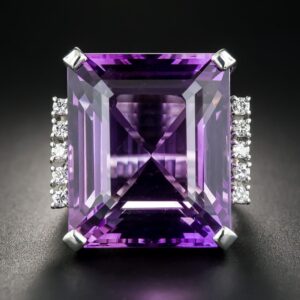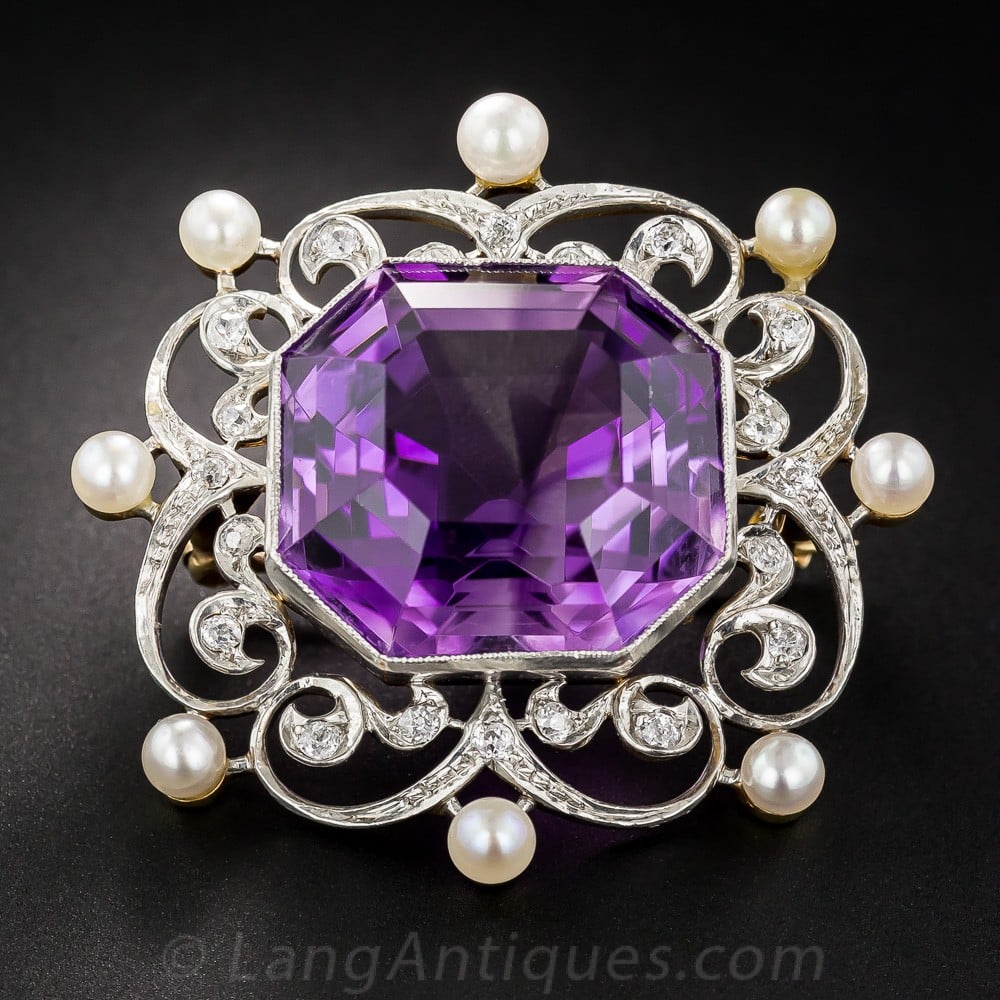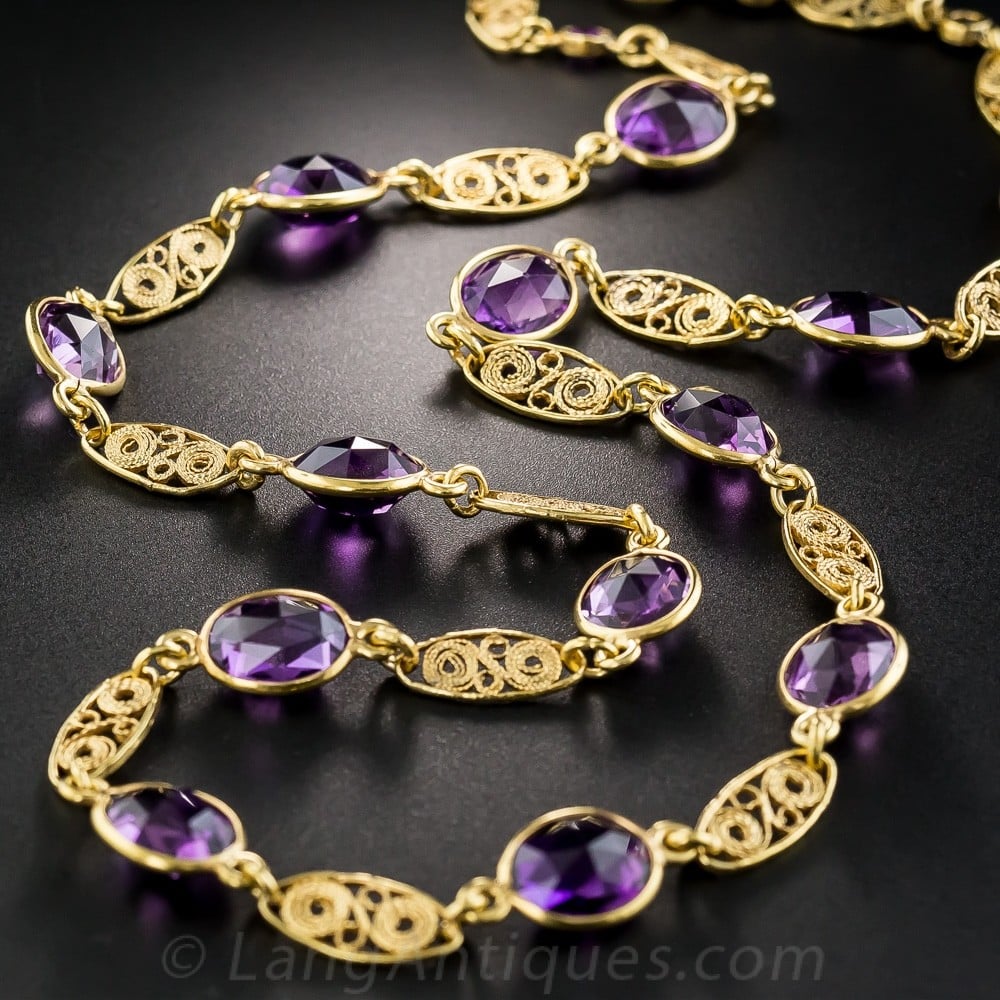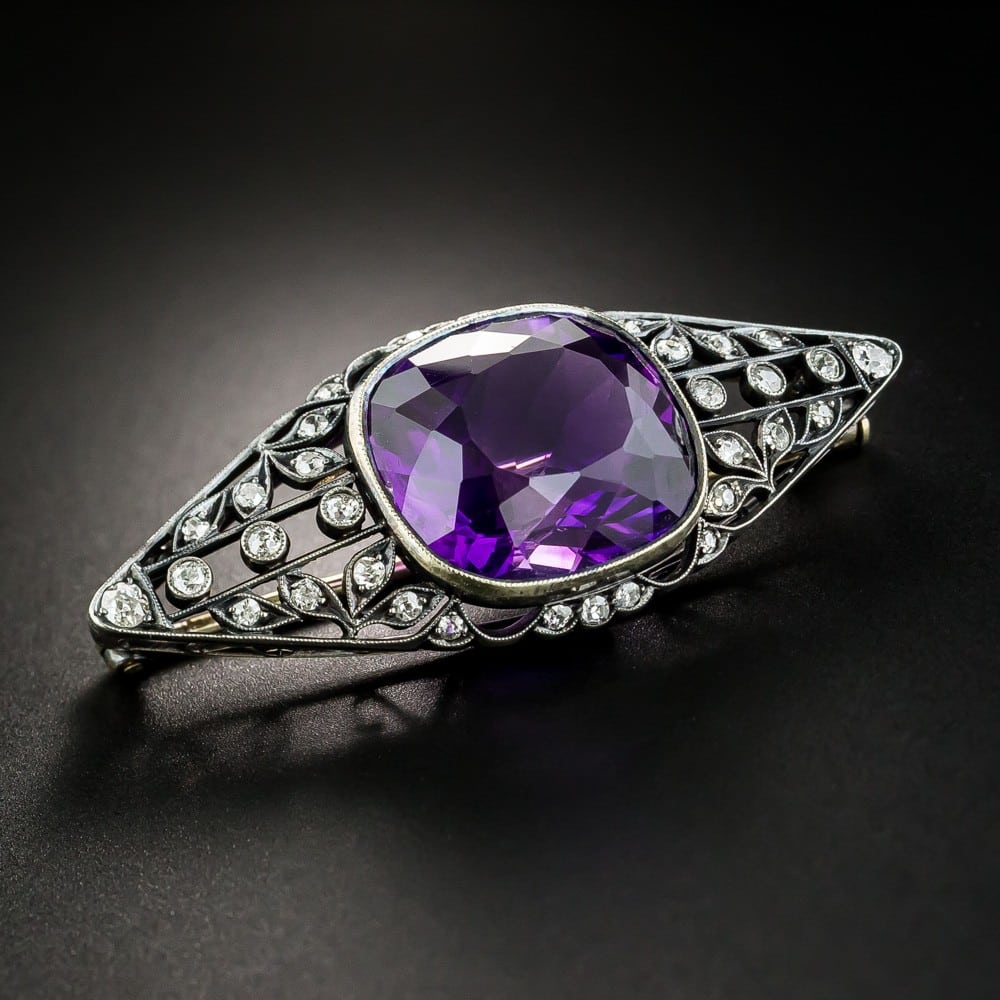
Amethyst is the most coveted member of the quartz family. It can be found in shades ranging from a very deep royal purple with hints of red, to a pale pastel lilac with subtle undertones of blue. The pale colors are sometimes called “Rose de France” and are often seen set in Victorian jewelry.
The amethyst owes its fabled color to trace amounts of manganese and iron. Its purple color made it a stone of royalty for many thousands of years and is seen in the British Crown Jewels. It was a favorite gem for Catherine the Great and considered sacred to Buddha in Tibet, where rosaries are often fashioned from it.
Before vast quantities of amethyst were discovered in Brazil, it was quite a rare gem, often commanding diamond prices! Amethyst is available in a wide range of calibrated sizes and shapes, including many fancy shapes and designer cuts.
Amethyst has been successfully synthesized in the lab, so buyers need to be sure their source is qualified to separate natural from lab-grown material.
A Brief History of Amethyst
Amethyst has been fashioned into gemstones and ornamental objects for thousands of years. Egyptian soldiers wore amethyst to remain calm during battle. In both ancient Persia and Peru, it was believed that amethyst, carved with the symbol of the sun warded off witchcraft.
The name amethyst is derived from the Greek “amethystos” meaning “not drunken”. It was supposed by the early Greeks that drinking wine from a chalice made of amethyst or placing an amethyst under the tongue would enable one to drink profusely without getting drunk. Leonardo Da Vinci wrote that amethyst was able to dissipate evil thoughts and quicken intelligence.



Amethyst was thought to encourage celibacy and therefore important in the embellishment of Catholic and other churches in the Middle Ages. It was deemed the stone of bishops who still often wear amethyst rings today.
The astrological signs of amethyst are Pisces, Virgo, Aquarius, and Capricorn. Amethyst is the birthstone for February. Amethyst is also the symbolic gem for the Seventeenth wedding anniversary.
Gemological Information for Amethyst
| Color: | Purple to Violet |
| Crystal Structure: | Trigonal |
| Refractive Index: | 1.544-1.553 |
| Durability: | Excellent |
| Hardness: | 7 |
| Family: | Quartz |
| Similar Stones: | Amethyst can be Confused with Purple Sapphire, Glass, Imitation and Synthetic Alexandrite and Scapolite |
| Treatments: | Heat |
| Country of Origin: | Brazil, Namibia, USA |
Amethyst Care
| Ultrasonic Cleaning: | Safe |
| Steam Cleaning: | Safe |
| Warm Soapy Water: | Safe |
| Chemical Attack: | None |
| Light Sensitivity: | May Fade, Usually Safe |
| Heat Sensitivity: | May Alter to Citrine Under Extreme Circumstances |
Gems & Gemology: The Quarterly Journal of The Gemological Institute of America
Amethyst:
- Winter 1949, Amethyst Color Induced in Rock Crystal Via Cyclotron, p. 255, 1p.
- Winter 1963, A Very Rare Star Amethyst, p. 101, 2pp.
- Summer 1971, Inclusions in Amethyst that Look Like Space Capsules, p. 322, 2pp.
- Winter 1977, Synthetic Amethyst from Russia, p. 365, 2pp.
- Winter 1978, Synthetic Amethyst, p. 365, 2pp.
- Spring 1979, Synthetic Amethyst, Currently No Test for a Flawless Amethyst, p. 151, 3pp.
- Summer 1980, Citrine-Amethyst Quartz – A Gemologically New Material, by John I. Koivula, p. 290, 4pp.
- Winter 1980, More News On Citrine-Amethyst Quartz, by John I. Koivula, p. 409, 1p.